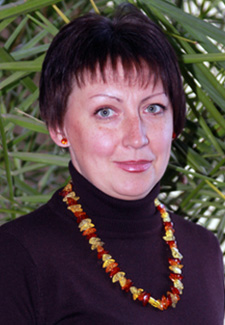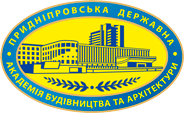Scientific profile

Assistant of the department of Highways, Geodesy and Land management
Iryna
ANDREIEVA
Contacts and CV
Research
Current research
I take part in the implementation of scientific research work on the topic "Resource-saving methods of designing structures on soil bases and automated geographic information systems of real estate cadastral register" №0121U100385 (2021, 2022).
More
Past research
During 2007-2010 I have been participated in the implementation of research work on the topic "Scientific fundamentals of resource conservation in the design of transport facilities and land management" (№0107U008795).
More
During 2011-2015 I have been participated in the implementation of research work on the topic "Resource-saving methods of designing in construction and land management" (№0111U006487).
More
I have been participated in the implementation of research work on the topic "Improvement of Design Methods in Construction and Land Management" (№0116U000780) during 2016-2020.
More
Publications
1. Формування класифікації земельних ділянок та ринку нерухомості залежно від фактору техногенного забруднення території / С. В. Бєгічев, Г.С. Ішутіна, І.Г. Андреєва Збірник тез доповідей 24-ї Міжнародної конференціїGeoforum-2019 – Львів-Брюховичі-Яворів, 2019. – С. 36. [Електронний ресурс]. – Режим доступу: http://zgt.com.ua/wp-content/uploads/2019/04/%D0%A2%D0%95%D0%97%D0%98.pdf
2. Класифікація нерухомості, в тому числі земельних ділянок / Ю. О. Кірічек, І. Г. Андреєва, Є. О. Ландо – Вісник Придніпровської державної академії, 2016. [Електронний ресурс]. – Режим доступу: https://cyberleninka.ru/article/n/klasifikatsiya-neruhomosti-v-tomu-chisli-zemelnih-dilyanok
3. Кадастрова класифікація земельних ділянок в Україні / Ю. О. Кірічек, Є. О. Ландо, І. Г. Андреєва. Вісник Придніпровської державної академії будівництва та архітектури. 2016. [Електронний ресурс]. – Режим доступу: https://scholar.google.com/citations?view_op=view_citation&hl=uk&user=PY25OXUAAAAJ&citation_for_view=PY25OXUAAAAJ:u5HHmVD_uO8C
Courses
1. Topography
Topography is the science of production measurements on the ground, determining the shape and size of the Earth and images of the earth's surface in the form of maps and plans.
The subject of study of the academic discipline is the methods of topographical and geodetic works. These methods are used when performing topographic surveys using modern technologies, for drawing up maps and plans that provide solutions to geodetic, land management and cadastral problems.
Knowledge of using geodetic tools, performing basic geodetic works, geodetic surveys will be obtained.
2. Geodesy
Geodesy is the science of accurately measuring and understanding three fundamental properties of the Earth: its geometric shape, its orientation in space, and its gravity field – as well as the changes of these properties with time. By using GPS, geodesists can monitor the movement of a site 24 hours a day, seven days a week. To measure points on the Earth’s surface, geodesists assign coordinates (similar to a unique address) to points all over the Earth. In the past, geodesists determined the coordinates of points by using Earth-based surveying tools to measure the distances between points. Today, geodesists use space-based tools like the Global Positioning System (GPS) to measure points on the Earth’s surface.
Geodesists must accurately define the coordinates of points on the surface of the Earth in a consistent manner. A set of accurately measured points is the basis for the National Spatial Reference System, which allows different kinds of maps to be consistent with one another.
3. Higher geodesy
Higher Geodesy deals with the figure of the Earth, its gravity field, Earth orientation in space, and monitoring of global dynamic processes like plate tectonics and sea level variations. It makes use of space geodetic techniques and measurements at the Earth surface. Higher Geodesy plays a key role in improving our understanding of the complex Earth system and provides accurate and stable reference frames that are fundamental to any kind of positioning on Earth and in Space as well as to the observation of Global Change.
4. Engineering geodesy
The subject of study of the academic discipline is the methods and means of geodetic measurements (angles, lengths of lines, elevations), the use of geodetic devices in solving engineering and geodetic problems in construction.
Students study in depth the methods of geodetic work used in the search, design, construction and operation of engineering buildings and structures.
During classroom lessons, students study geodetic tools, perform geodetic surveys, take out in nature on the terrain in accordance with the project characteristic points of buildings and structures and boundary marks.
Also, students prepare the necessary initial data for the design of field engineering and geodetic measurements. Techniques of basic geodetic work, geodetic surveying, field surveying are studied.
5. Geoinformation systems and databases
A geographic information system (GIS) is a type of database containing geographic data (that is, descriptions of phenomena for which location is relevant), combined with software tools for managing, analyzing, and visualizing those data.
The uncounted plural, geographic information systems, also abbreviated GIS, is the most common term for the industry and profession concerned with these systems. It is roughly synonymous with geoinformatics and part of the broader geospatial field, which also includes GPS, remote sensing, etc.
Geographic information science, the academic discipline that studies these systems and their underlying geographic principles, may also be abbreviated as GIS, but the unambiguous GIScience is more common. GIScience is often considered a subdiscipline of geography within the branch of technical geography.
Geographic information systems are utilized in multiple technologies, processes, techniques and methods. They are attached to various operations and numerous applications, that relate to: engineering, planning, management, transport/logistics, insurance, telecommunications, and business. For this reason, GIS and location intelligence applications are at the foundation of location-enabled services, which rely on geographic analysis and visualization.
GIS provides the capability to relate previously unrelated information, through the use of location as the "key index variable". Locations and extents that are found in the Earth's spacetime are able to be recorded through the date and time of occurrence, along with x, y, and z coordinates; representing, longitude (x), latitude (y), and elevation (z). All Earth-based, spatial–temporal, location and extent references should be relatable to one another, and ultimately, to a "real" physical location or extent. This key characteristic of GIS has begun to open new avenues of scientific inquiry and studies.
6. Photogrammetry and remote sensing
This discipline covers the issue of photogrammetric processing of both a single image and a stereo pair of images.
Photogrammetry is the science and technology of obtaining reliable information about physical objects and the environment through the process of recording, measuring and interpreting photographic images and patterns of electromagnetic radiant imagery and other phenomena.
Photographs have inherent distortions and displacements in them and the most common distortion in aerial photography is height distortion, followed by tilt displacement due to the aircraft’s movements. These distortions are easily removed through various photogrammetric processes. Other distortions such as image distortion are more difficult to correct. To understand the process of rectification one has to understand the inherent distortions and displacements in an aerial photograph.
Students learn to do removing geometric distortion from a raster or a vector object. Rectification is usually achieved by aligning raster features or vector coordinate positions with features on a base map or other coordinate reference framework.
Students transform images, study the occurrence of errors in photogrammetric imaging, the technology of terrestrial photogrammetric imaging, aerial photography, and space photography.
Also, during lectures, students learn methods of remote sensing, determining the shapes, sizes and locations of objects based on their images on photographic images, deciphering objects based on the spectral characteristics of a raster image.
